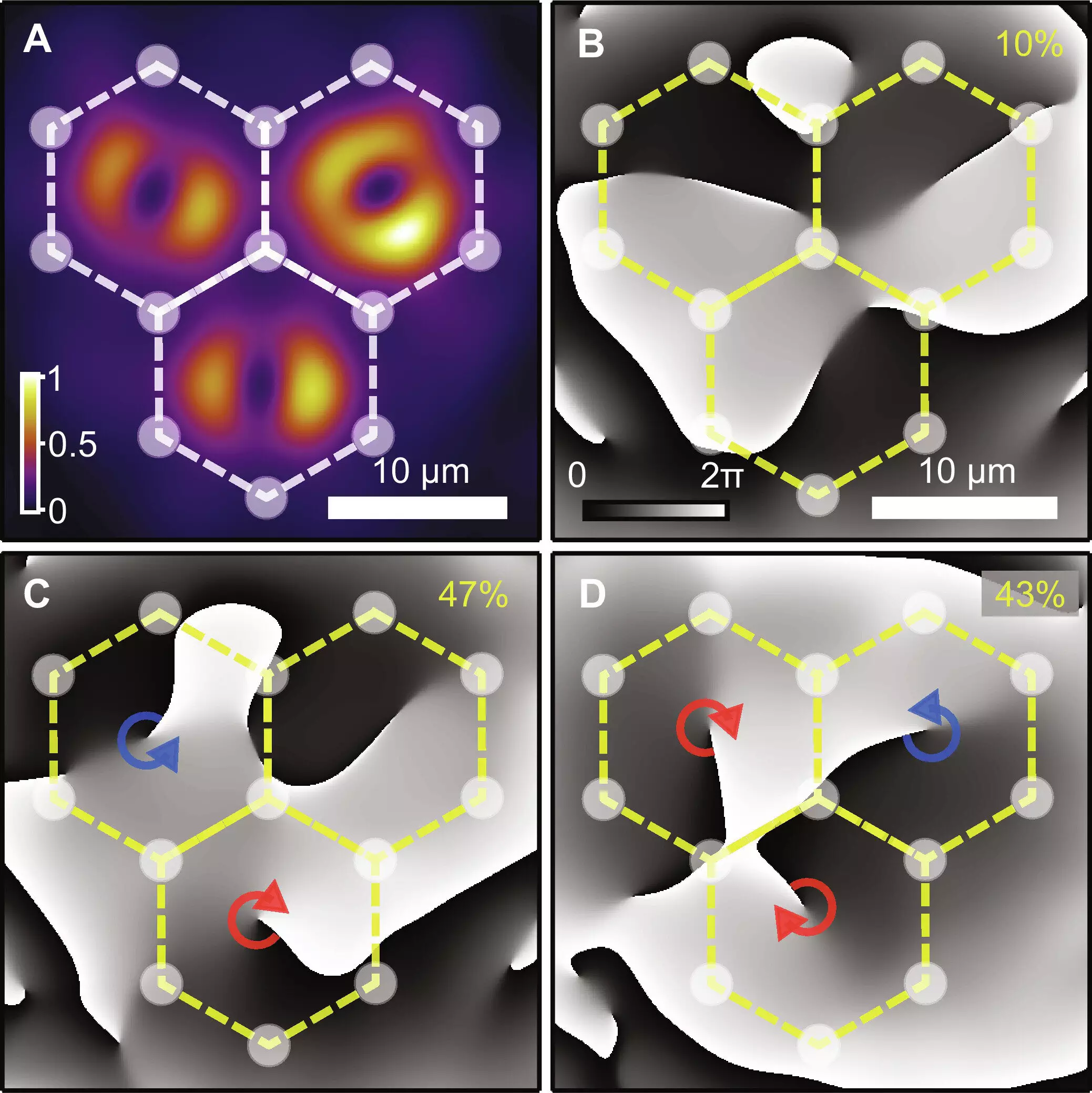Quantum vortices have always been a fascinating phenomenon in the world of physics. A recent study conducted by researchers from Skoltech, Universitat Politècnica de València, Institute of Spectroscopy of RAS, University of Warsaw, and University of Iceland has delved into the spontaneous formation and synchronization of multiple quantum vortices in optically excited semiconductor microcavities. This groundbreaking research sheds light on the behavior of polariton quantum vortices in structured artificial lattices, opening up new possibilities for the study and simulation of condensed matter systems.
The study conducted by the researchers involved the creation of a triangular lattice with 22 cells, each containing trapped polariton condensates with single-charge vortices. Through optical excitation of a semiconductor microcavity sample using spatial light modulation techniques, the researchers were able to observe the formation and behavior of these quantum vortices in the lattice. Interestingly, they found that the vortices in neighboring cells tended to have an opposite topological vortex charge, indicating a form of “antiferromagnetic coupling” between them.
The experiments were carried out at Skoltech’s Photonics Center’s Hybrid Photonics Laboratory, under the leadership of Professor Pavlos Lagoudakis. The researchers utilized a semiconductor planar microcavity composed of highly reflective mirrors with InGaAs quantum wells in between. This setup, operating under strong-light matter coupling conditions, allowed for the creation of exciton-polaritons or microcavity polaritons, which are coupled states of excitons and confined cavity photons.
One of the key findings of the study was the synchronization of quantum vortices in the triangular lattice. The researchers observed a pattern of extended antiferromagnetic order among the vortices, indicating a level of coordination and interaction between them that had not been previously demonstrated. This revelation opened up new avenues for understanding the behavior of quantum vortices in driven-dissipative systems, shedding light on the complex dynamics at play in these structures.
The study was not only experimental but also theoretical in nature. Dr. Helgi Sigurðsson from the University of Warsaw contributed to the research by analyzing the data and drawing connections between the observed behavior of the quantum vortices and the low-energy configurations of the Ising spin Hamiltonian. The significant correlations found between the orbital angular momentum of the vortices and the Ising spin configurations highlighted the deep connections between quantum mechanics and condensed matter physics.
The research conducted by the team of international researchers has significantly advanced our understanding of quantum vortices in semiconductor microcavities. The observation of spontaneous formation and synchronization of multiple quantum vortices in structured lattices opens up new possibilities for the study and simulation of complex condensed matter systems. The findings of the study pave the way for further exploration of the behavior of quantum vortices and their potential applications in future technologies.

